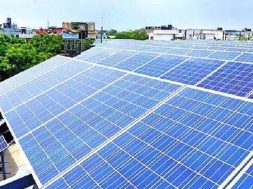
In Short : Global trade tensions are reshaping the solar industry, with U.S. tariffs on Southeast Asian imports creating both risks and openings. Indian firms may benefit as Chinese competitors face barriers, but challenges remain from potential counter-tariffs and price pressure. Meanwhile, Chinese companies are shifting production abroad. Solar makers worldwide must adapt to evolving policies to stay competitive.
In Detail : The global solar industry is experiencing significant disruption as escalating trade tensions create a mix of risks and opportunities. Recent U.S. tariffs on solar imports from Southeast Asia have particularly affected Chinese manufacturers, prompting a reshuffling of global supply chains. These measures, while aimed at protecting American solar producers, are sending ripples through the international solar market.
Indian solar manufacturers are emerging as potential beneficiaries. With the U.S. targeting Chinese and Southeast Asian suppliers, Indian firms see a chance to expand their market share, especially in solar cell exports to the U.S. India’s growing domestic capacity, driven by its own import restrictions and support for local manufacturing, enhances its position in this shifting landscape.
However, these opportunities come with significant risks. Despite ambitions to scale production, India remains heavily reliant on upstream components from China, such as polysilicon and wafers. Any disruption in these imports could hinder India’s ability to meet demand and take full advantage of new openings in global trade.
The broader implications of the U.S.-China trade conflict are also concerning for the solar industry. As Chinese products face heavy tariffs, costs for solar modules in the U.S. are expected to rise. This could slow the pace of solar adoption and increase energy costs for consumers, undermining efforts to transition to cleaner energy sources.
In Southeast Asia, affected manufacturers may redirect exports to other regions, like the European Union. This could lead to a surge of cheaper solar panels in the European market, potentially disrupting local industries and complicating efforts to support domestic solar manufacturing across the EU.
Overall, while the trade turmoil has unlocked new possibilities for certain players in the solar sector, it has also introduced a wave of uncertainty. Companies must now navigate a volatile environment shaped by geopolitical tensions, protectionist policies, and the delicate balance between supply chains and sustainability goals.











